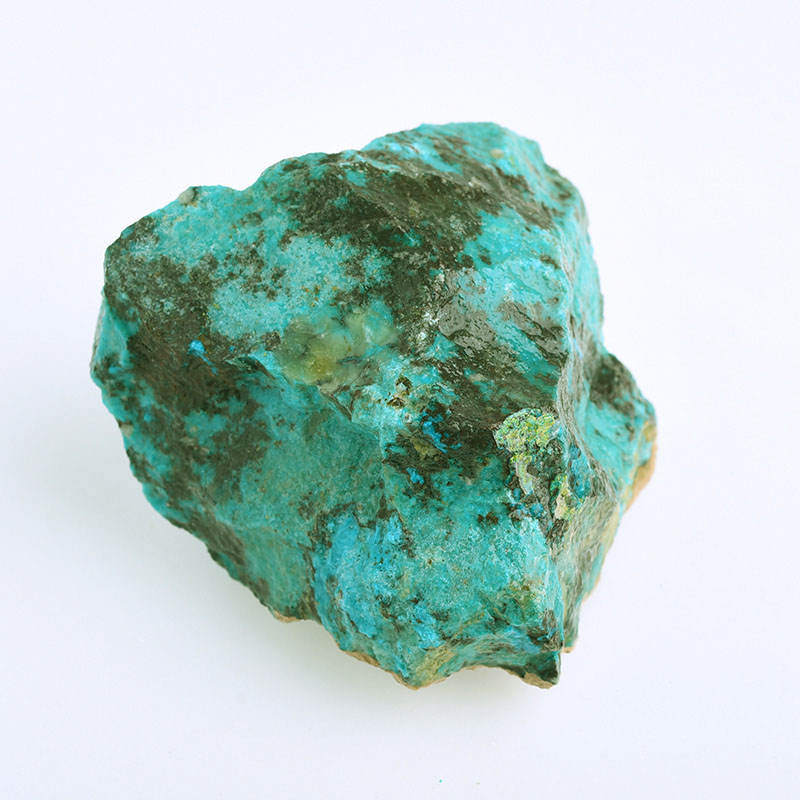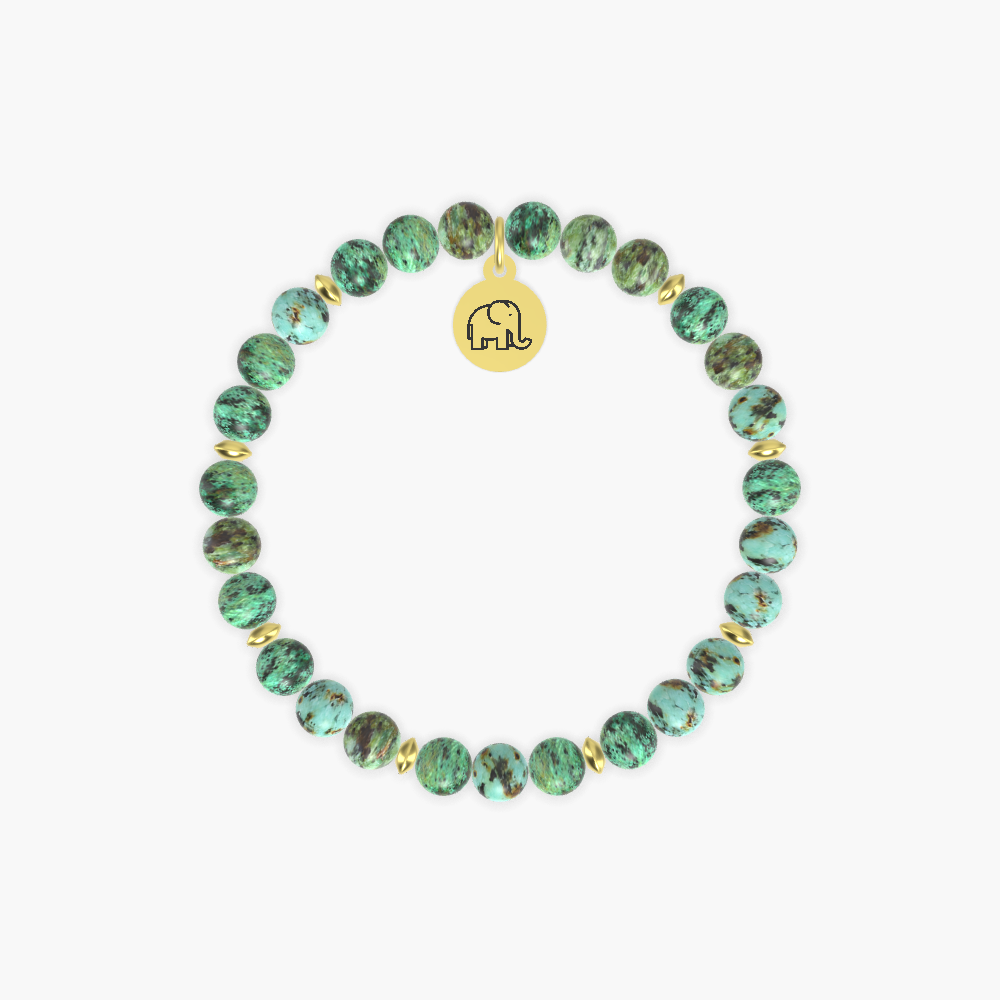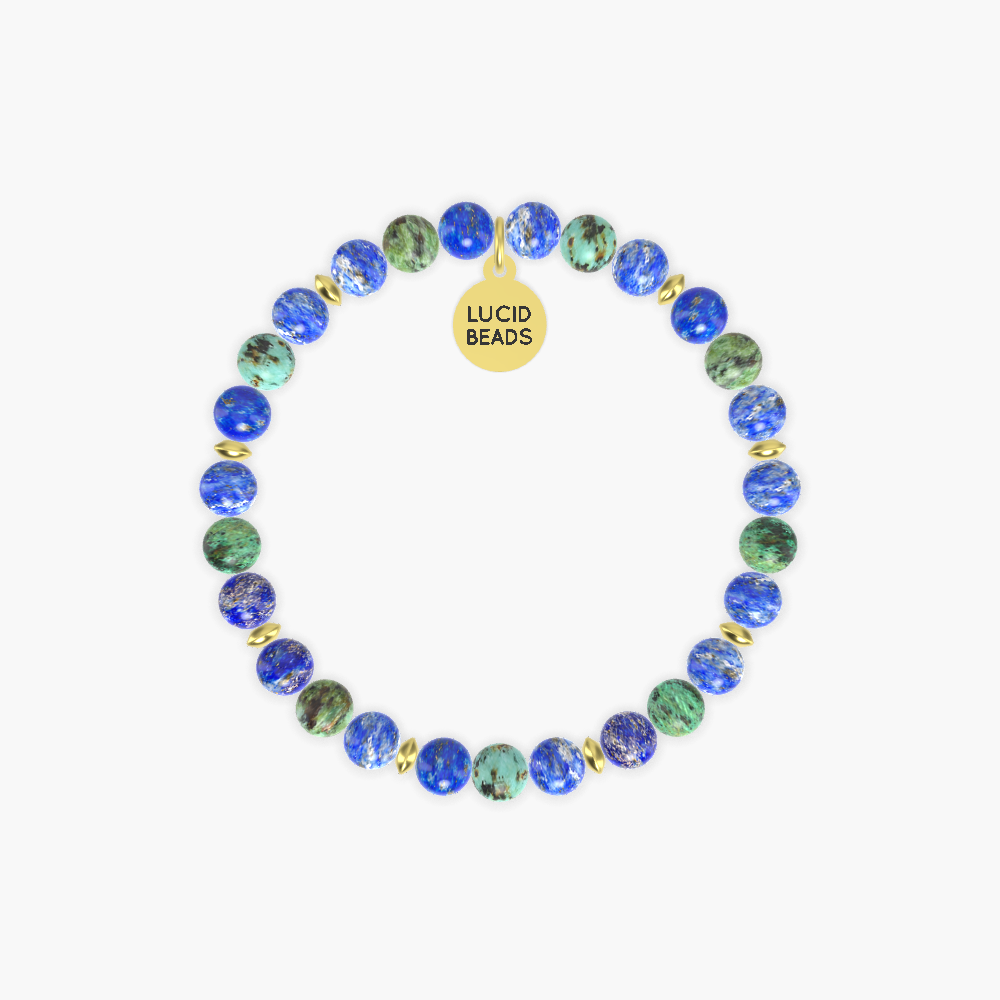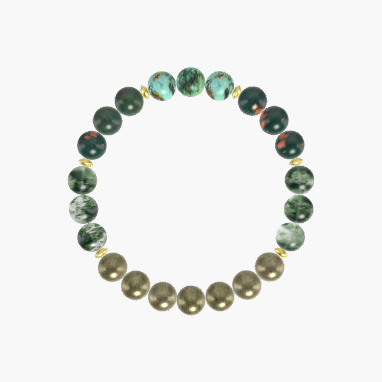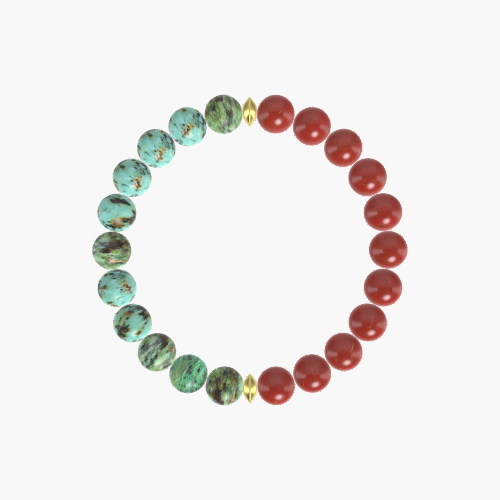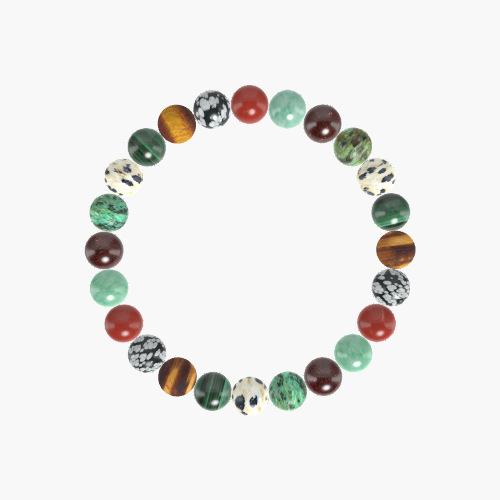African Turquoise
Luck Transformation Prosperity Wisdom Grounding
About African Turquoise
African Turquoise, despite its name, is not a true turquoise but a type of Jasper found in Africa that resembles turquoise in its beautiful range of blue and green colors, veined with matrixes of brown, black, or gray. It is celebrated for its transformational properties, symbolizing growth, development, and positive change.
Physical and Geological Properties
African Turquoise is a variety of Jasper, a microcrystalline quartz, known for its unique matrix patterns and color variations. This stone typically showcases a mix of green, blue, and teal hues, mimicking the appearance of true turquoise. It ranks about 6 to 7 on the Mohs hardness scale, making it relatively durable for various types of jewelry. It is primarily sourced from mines across Africa, notably in regions such as Namibia and South Africa. The distinct coloration and patterning of African Turquoise are due to the presence of copper compounds within the stone, which contribute to its turquoise-like appearance.
Historical Background
The term "African Turquoise" is somewhat misleading, as the stone is actually Jasper that possesses a similar aesthetic to true turquoise. Its use dates back centuries, with ancient civilizations valuing it for both its beauty and its supposed protective and healing properties. It was often worn as amulets or used in ceremonial rites. The stone's name reflects its resemblance to turquoise and its primary location of origin, serving as a bridge between the aesthetics of turquoise and the geological reality of Jasper.
Metaphysical Properties and Symbolic Meanings
African Turquoise is believed to be a stone of transformation, encouraging growth and positive change. It is said to awaken the soul to its intended purpose, promoting confidence and easing negative emotions. This stone is often associated with the third eye chakra, enhancing intuition and understanding. In astrology, it is linked to the sign of Sagittarius, embodying the spirit of adventure and wisdom. As a symbol of balance and renewal, it is thought to help its wearer navigate through changes and challenges with ease and grace. African Turquoise is considered a modern alternative for the December birthstone due to its visual similarity to traditional turquoise, and its appealing metaphysical qualities.
Pairing with Other Gemstones
African Turquoise pairs well with other semi-precious gemstones that enhance its transformational energies. Lapis Lazuli, with its deep celestial blue, amplifies intuition and wisdom. Carnelian, known for its vibrant orange hues, can boost creativity and courage, complementing African Turquoise's growth-inducing properties. Smoky Quartz, with its grounding energy, provides emotional stability, making it an excellent companion for the transformative journey that African Turquoise symbolizes.
Basic Care Instructions
To maintain the beauty and integrity of African Turquoise, it is important to handle it with care. Avoid exposure to harsh chemicals, extreme temperatures, and prolonged sunlight, which can damage the stone or alter its color. Cleaning should be done with a soft, dry cloth or with mild soap and water, ensuring the stone is dried thoroughly afterward. It is also advisable to store African Turquoise separately to prevent scratching from harder stones.
Use in Bracelets
African Turquoise makes for an excellent choice in bracelet making due to its striking appearance and durability. Its range of colors and unique patterns can complement various styles, from elegant to bohemian. Furthermore, its metaphysical properties add a meaningful layer to jewelry, making African Turquoise bracelets not just a fashion statement but a personal talisman for growth, change, and positive transformation. The versatility and strength of this stone ensure that bracelets crafted from it are both beautiful and long-lasting, suitable for everyday wear.
